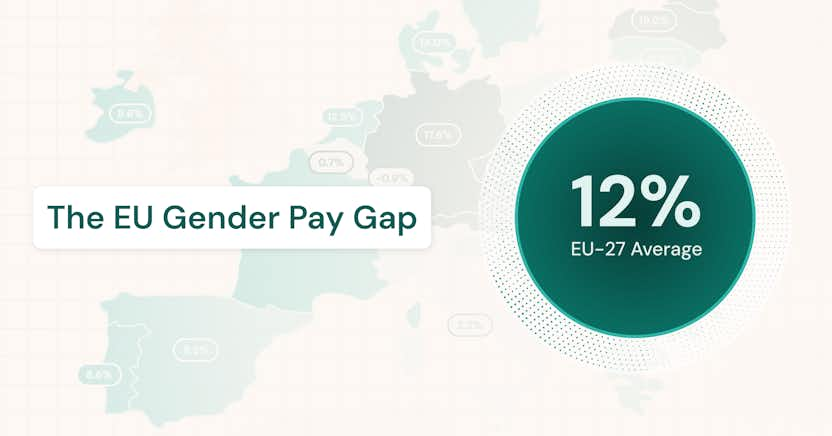Closing Pay Gaps: A Data-Driven Structured Approach

Learn more about the following beqom products
Companies may be going about pay equity all wrong. In a recent article in Harvard Business Review entitled A Better Way for Companies to Address Pay Gaps, two of the co-creators of Pay Equity by beqom (PayAnalytics), Margret Bjarnadottir and David Anderson, outlined a better way for companies to address pay gaps.
Pay equity and transparency are becoming increasingly important to organizations today, for reasons of risk and compliance as well as for recruitment, retention, and employer branding. Companies are seeking solutions to ensure sustainable fair pay but the problem can be a complex one. The authors have synthesized years of academic research and interactions with numerous organizations to present a data-driven approach to sustainable fair pay.
When seeking to address pay inequities, the typical reaction is to focus on employees who earn less than would be expected based on their qualifications and job responsibilities. While this method may seem intuitive, it does not generally succeed in closing pay gaps or pinpointing the source of pay inequity in a firm’s pay structure, and it can cause salary compression.
A structured approach, say the authors, who also include David Gaddis Ross, is required to address and eliminate systemic pay gaps.
How a structured approach can eliminate pay gaps
The structured approach explained and illustrated in the HBR article focuses on closing pay gaps in two ways: by addressing systematic biases, and by addressing the locus of pay inequity in a firm’s salary structure.
The authors say that focusing only on remediation for employees who are paid significantly less for the same work than their peers — the most common approach to addressing pay equity — does not necessarily solve the underlying issues and may reduce but not eliminate the pay gap. At the same time, it may cause salary compression in the underpaid groups by reducing the difference between the highest and lowest-paid employees, losing the value of pay as a motivation to perform. And, by disproportionately raising salaries for the target group, such as women, you may create new pay gaps along another dimension such as age or race if the women are mainly in a certain age or race category.
So, you may have helped some underpaid employees move closer to equal pay for equal work, but you have not addressed systematic biases that will continue to cause inequity throughout the organization.
Finding the root cause of inequity
The structured analytical approach elucidated by the authors starts with striving to understand the root causes of the company’s pay gaps — “the locus of inequity in their salary structure and any associated systematic biases.” Often pay gaps are not found company-wide, but are focused in certain areas, such as certain locations or departments. So it is important to determine where the locus of the inequity lies and target it where it exists.
When you try to fix pay inequity by focusing on the most egregiously underpaid, it may not help. In a case cited by the authors, there was a cohort of top-performing women who were well paid, just not as well paid as the top-performing men in equivalent positions. Addressing pay equity in that company by boosting only the lowest paid would not have fixed the problem. Equity has to be across the board and applied in a way that supports equal pay for equal work across all roles.

The Pay Equity Playbook
It’s no surprise that employees know and care—a lot—about pay equity. So what actions really matter to your workforce when it comes to not just pay fairness, but employee happiness and retention?
How a structured approach to pay equity works
In a structured approach, you will:
- Assess the pay gap by department and allocate remedial resources to the area with the greatest inequities.
- Determine where in the pay distribution the differences are, in high ranges, low ranges, etc.
- Recognize the benefits and limitations of data. A data-driven approach can identify pay inequity and propose action to remediate pay gaps, but there may be valid business reasons—outside the data—as to why some employees should not get raises, or get larger ones, and managers need to be in the loop to make those calls.
Research shows that women are often found to be below their expected pay level, and rarely above it. A structured approach to pay equity analysis can find and fix systemic pay equity issues.
As data scientists with a practical business perspective, the authors understand both the usefulness and the limitations of data. Data is powerful a tool to eliminate bias, but it is not a substitute for human judgment. The two work hand in hand.
Applying technology to pay equity
PayAnalytics by beqom empowers companies to analyze pay for gender and other forms of demographic fairness and take appropriate action. It uses multivariate regression analysis to find the variables associated with pay differences and proposes remedies for unexplained pay gaps. By delivering these advanced analytic capabilities in the context of a plug-and-play pay equity software, PayAnalytics by beqom supports data-driven pay decisions for new hires, merit increases, and promotions, helping companies attract and retain talent, drive performance, and optimize costs while ensuring compliance and reducing risk.
Want to learn more about beqom?
For more information or to get started now with a plug-and-play pay equity solution for your company, contact beqom today.







